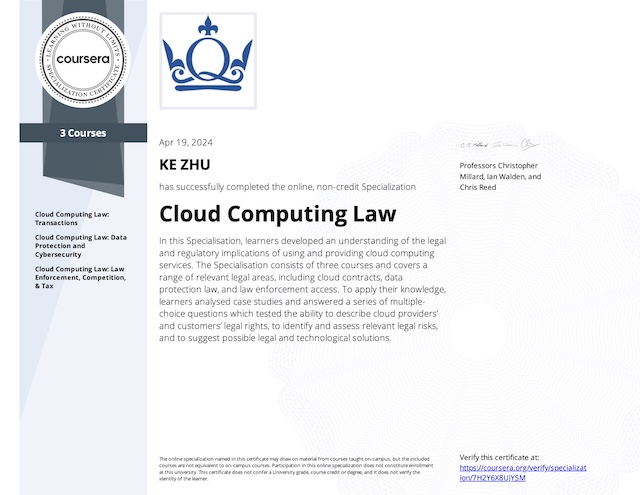Recall that consideration is a traditional prerequisite for forming a contract. When it comes to a promise, the court might find that there was consideration, like in the classic chestnut of case Hamer vs Sidway. However in the case Kirksey vs Kirksey, the court considered a promise that lacked consideration, which is called a gratuitous promise.
Gratuitous Promises
In the case Kirksey vs Kirksey, the central issue is simple: was the defendant’s promise supported by consideration? Consideration is either a detriment to the promisee or a benefit to the promisor. The plaintiff Antillico abandoned the property and traveled 60 miles in reliance on her brother-in-law’s (the defendant) promise.
However reliance alone is not enough. There must be a bargain, a quid pro quo.
“To constitute consideration, a performance or return promise must be bargained for.
A promise for a return promise is bargained for if it’s sought by the promisor in exchange for the promise and is given by the promisee in exchange for that promise. (The inducement requirement)”
Section 71 of the Restatement Second of Contracts
At least, the court thought there was no bargain, because the court called the promise a mere gratuity. It can be difficult to distinguish:
- a conditional gratuitous promise, from
- a bargained-for promise (a quid pro quo)
Often, we need extra facts to figure out whether a particular promise is offering a quid pro quo, or offering a conditional gratuity. A 2006 article by William Casto and Val Ricks cast some new light on this question. It added details suggest that maybe Antillico (plaintiff)’s brother-in-law (defendant) was, in fact, seeking a quid pro quo.
Recall the doctrine of promissory estoppel, which allows courts to enforce promises even if there are not contracts because of lack of consideration. The conditions for promissory estoppel are:
“A promise which the promisor should reasonably expect to induce action or forbearance of a definite and substantial character on the part of the promisee, and which does induce such action or forbearance is binding if injustice can be avoided only by enforcement of the promise.”
Section 90 of the Restatement Second of Contracts
The brother-in-law’s promise surely meets the requirements of promissory estoppel. However the case was decided in 1845, promissory estoppel was not yet a thing in contract law. Since law changes over time and can differ from place to place, these factors might simply explain the outcome.
So, in total, a conditional gratuitous promise does not create a contract, a contract requires a bargained-for exchange. Even if a promise induces the promisee to take or forbear from taking a certain action, the promise will not be an enforceable contract if that action was not sought by the promisor in exchange for his promise.
Consideration
The consideration for a promise is first defined in the Section 75 of the Restatement (First) of Contracts:
- An action other than a promise, or
- A forbearance, or
- The creation, modification, or destruction of a legal relation, or
- A return promise, bargained-for and given-in exchange for the promise
The comment C to this section states further clarifies:
The fact that the promisee relies on the promise to his injury, or the promisor gains some advantage therefrom, does not establish consideration without the element of bargain or agreed exchange.
Comment C
In the typical bargain, the consideration and the promise bear a reciprocal relation of motive or inducement:
- The consideration induces the making of the promise, and
- The promise induces the furnishing of the consideration.
Williston’s Benefit Test
Williston offered a helpful, though not conclusive test for determining whether a condition included in an offer constituted consideration for the offer or was “a mere condition in a gratuitous promise”.
If the occurrence of the condition would benefit the promissor, it could be fairly inferred that the occurrence of the condition was requested as consideration. In other words, the fact that the condition would benefit the promisor, suggests that the promisor’s promise was meant to induce the promisee’s conduct.
Nominal Consideration
A nominal consideration is a payment of a very small sum such as $1 to satisfy the contract’s consideration requirement. While many courts reject the idea that nominal consideration is sufficient for a contract, the issue remains very contentious.
Courts usually don’t inquire into the adequacy of consideration – whether the quid was roughly the same value as the quo. Under a strict reading of this rule, payment of a very small sum should be enough to satisfy the consideration requirement. This kind of approach was first advocated by the First Restatement of Contracts.
The more widely accepted approach today rejects nominal consideration as being sufficient consideration. Deeming it insufficient for creating a contract. While a peppercorn satisfies the older legal detriment definition of consideration, it doesn’t satisfy the more modern bargained-for or inducement conception of consideration.
The Second Restatement of Contracts states that courts should be suspicious of contracts where a large disparity in value exists. The disparity may indicate that the consideration was not in fact bargained-for, but was a mere formality or pretense of a bargain.
Nominal consideration can be viewed as a sort of formality. It’s a sign of the party’s intent to achieve a certain legal result. Lon Fuller in a classic article called Consideration and Form suggested that legal formalities serve evidentiary, cautionary and channeling functions and that they could be good.
At ‘old’ common law, the formality needed to establish a contract was the seal. The writ of covenant, which was used to enforce certain agreements, conditions enforcement on the existing of writing under seal. The legal effect did not derive from the substance of the agreement whether it was bargained-for exchange, but from the formal mode in which the promise was cast. In the past, at the Common Law, an agreement under seal was binding without consideration if:
- It is in writing and sealed
- The document containing the promise is delivered
- The promisor and promisee are named in the document
One contemporary attempt at replicating the effect of the seal has been the Model Written Obligation Act, but it’s been only passed in Pennsylvania.
During the early 20th century, many US states passed statutes that radically reduced the legal effect of sealed writing, reducing their legal enforceability. Some states abolished the seal entirely.
Every effect of the seal which relates to ‘sealed instruments’ as such is wiped out insofar as contracts for sale are concerned.
UCC Section 2-203
Other state legislatures retain the seal, but provided that lack of consideration could remain a defense to sealed instruments. Other states have adopted other modifications such as providing a longer statute of limitation for contracts under seal.
For the practitioner, this means that it’s crucial to know the effect of the seal in the jurisdiction in which you are working. The decline of seal has not meant the complete abandonment of legal formalities. The uniform commercial code provides three examples in which signed writing can serve as a substitute for consideration:
| Section 1-306 | covers Waiver or Renunciation of Claims of right after breach and it provides at any claim, or right arising out of an alleged breach can be discharged without consideration by a written waiver or a renunciation signed and delivered by the grieved party. |
| Section 2-205 | discusses a firm offer, which are offers that cannot be revoked before acceptance and it gives conditions under which a firm offer can be enforced even without consideration. |
| Section 2-209 | says that an agreement modifying a contract needs no consideration to be binding. |
Tips for Enforcement
- Explicitly say parties intend to be legally enforceable (and to be governed by law).
- Have return promise hard to value
- Increase the value of both sides’ promises
When it is necessary for parties to intend that an agreement with consideration be legally binding in order for them to be legally bound by that agreement?
Cohen v. Cowles Media Co.
The case suggests that at least in the context of reporters and their sources, there needs to be explicit evidence that the parties wanted to be legally bound in order for their agreement to be legally binding. There are two issues in this case.
Fraudulent Misrepresentation
The misrepresentation rule means that mere failure to perform what one has promised does not amount to fraud. We don’t want to characterize everyone who doesn’t succeed at fulfilling all their promises as a fraudster. Instead, when someone fails to follow through on a promise, for which there was consideration, parties generally should pursue a suit for breach of contract.
We limit, what is called promissory fraud actions, to circumstances when the promisor at the time of promising didn’t intend to perform the promise.
Breach of Contract
Moral and legal obligations do not always coincide. The judge is “not persuaded that in the special milieu of media newsgathering, a source and a reporter ordinarily believe they are engaged in making a legally binding contract. They are not thinking in terms of offer and acceptance in any commercial or business sense”. And so the judge decides not to “superimpose a legal obligation on a moral and ethical obligation”.
TINA LEA
However the justice’s conclusion is troubling. This rule is very odd because it’s the opposite of the ordinary rule.
Neither real nor apparent intention that a promise be legally binding is essential to the formation of a contract. But a manifestation of intention that a promise shall not affect legal relations may prevent the formation of a contract.
Section 21, The Second Restatement of Contracts
In other words, the default is that when the parties make an agreement involving all the necessary components of offer and acceptance and consideration, that agreement is legally binding. Even if it doesn’t say that the parties intend for it be legally binding. Parties can choose explicitly not to make their agreements legally binding, but they need to go to extra effort to do so.
That’s why you some times see the statement: “this is not a legally enforceable agreement included in written documents.” This is called a TINA LEA provision based on the abbreviation.
In this case, Justice Simonett turns the principle on its head. The parties don’t have a legally binding contract because there’s no explicit evidence that they wanted, that they intended it to be legally binding. This is the general rule in many other countries, including England and continental Europe countries, but not in the United States.
Here the court seems to be motivated to make a new exception out of the concern that legal liability in cases like these would interfere with the important work of reporters and newspaper editors. It’s not clear, though, that Justice Simonette’s concern about the news industry is a valid one.
It’s also important to note that the United States Supreme Court ended up ruling for the plaintiff in this case finding that generally applicable laws apply to the press, in spite of the incidental effects of the ability to gather and support the news. The US Supreme Court said that there still could be an action under promissory estoppel.
Adequacy of Consideration
Whether consideration can be sufficient even if it loses its value following contract formation? Actually the consideration doctrine is NOT concerned with the equivalence of exchange – that is, whether there are disparities in the value of what the parties promised each other.
The consideration doctrine does not police the equivalence of exchange, even very large disparities in the respective parties consideration typically will not give rise to an unenforceable contract. Because of this, consideration doctrine is a very poor policy instrument to assure substantive fairness.
Price and Unconscionability
When is a price discrepancy too large, or so large that it necessitates a finding of unconscionability? Relying on the price term to find unconscionability under 2-302, is controversial. Most courts had been reluctant to find price term unconscionability.
In the case Jones versus Star Credit Corporation, the court found a contract to be unconscionable primarily based on the price of the goods sold. The finding of unconscionability relied primarily on substantive unconscionability. The Court argues that it’s possible to find fraud in the terms of the bargain itself. That is to derive or infer procedural unconscionability from the existence of substantive unconscionability. The case provides a rare caveat to the rule that courts usually don’t inquire into the adequacy of the consideration.
Pre-Exisiting Duty Rule
The pre-existing duty rule says that a pre-existing duty cannot be used as consideration for a contractual modification. As applied to contractual modifications, the pre-existing duty rule says that modifications to a contract, unsupported by additional consideration, are unenforceable.
In other words, if a party promises to do something that he is already legally bound to do, his promise will not count as consideration to support a new contract with a higher price. The law will regard the promise as a nudum pactum, a naked promise, unclothed in consideration. Threatening to withhold what you already had a legal duty to perform is not consideration.
Performance of a legal duty owed to a promisor which is neither doubtful nor the subject of honest dispute is not consideration. But a similar performance is consideration if it differs from what was required by the duty in a way which reflects more than a pretense of bargaining.
Section 73 of the Restatement
Note that the restatement definition allows for contractual modifications that settle honest legal disputes, or reflect more than just a pretense of bargaining.
My Certificate
For more on Contract Law: Promise and Consideration, please refer to the wonderful course here https://www.coursera.org/learn/contracts-1
Related Quick Recap
I am Kesler Zhu, thank you for visiting my website. Check out more course reviews at https://KZHU.ai



